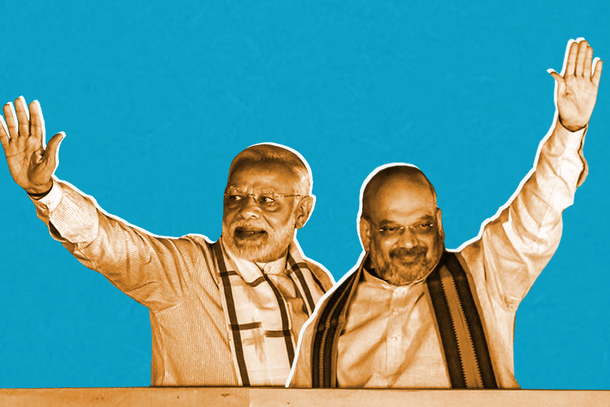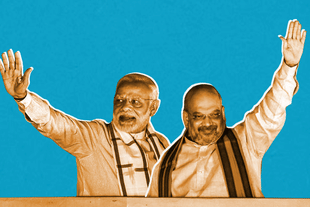Commentary
BJP's Project Of Forging The New Normal
Kochi Boy
Dec 15, 2023, 03:45 PM | Updated 04:01 PM IST
Save & read from anywhere!
Bookmark stories for easy access on any device or the Swarajya app.


One of the most enjoyable and often thought-provoking exercises that students of history undertake is that of the ‘What if?’.
Scores of argumentative points have been made in India while undertaking such an analysis, of how today’s India would have been different had the first Prime Minister of the Republic not been Pandit Jawaharlal Nehru.
Would the much more culturally rooted and pragmatic Sardar Vallabhai Patel have set the nation off on a different route — both socially and economically?
Would his leadership have created a more wholesome national direction, inclusive of the thoughts of giants like Rajaji, Pandit Madan Mohan Malviya, Dr Rajendra Prasad, etc., instead of what India actually got with Pandit Nehru almost ruthlessly recasting the national cabinet in his own image?
These are deliberations that have been conducted in the Sangh Parivar circles for decades, most of which its political representatives have spent on the fringes or in opposition.
And while the axis of political power has shifted drastically over the last 10 years, there is no question that the cultural and social narrative that the Congress set during their decades in power is yet to be dislodged emphatically.
More than any other socio-political entity in India, the Sangh is alive to the task of using political power to drive social and cultural change. It is this understanding and motivation that has kept its political projects (both the Jan Sangh and the Bharatiya Janata Party-BJP) alive and united, even through decades of being in the political wilderness.
It has been evident that the Modi-Shah duo has been cognisant of the real reasons behind the surprise defeat of the National Democratic Alliance in 2004 and the consequences that followed.
Hence, the first Modi term was spent ruthlessly ensuring that the jump in the political base achieved in 2014, on the back of heavy anti-incumbency towards the UPA and the promise of Prime Minister Narendra Modi, was consolidated and then expanded.
With the start of the second term came a flush of ideological and cultural wins — Article 370 abrogation, the Ram Janmabhoomi verdict, and the Citizenship Amendment Act.
The fact that these events occurred early in the second term ensured that the realisation of a cultural change being in effect has sunk in and been accepted across the nation.
If anyone doubts this, one would suggest casting our minds back to the hushed tones in which the Ram Mandir and Jammu-Kashmir used to be discussed even a few years back and how unabashed the public's wholehearted embrace of the BJP’s stand on these issues is today.
Even so, the process of cultural reset still has a long way to go, and the project requires an extended period of the BJP being in dominating power at the centre and in key states.
It is important to understand this in the context of how the BJP has gone about selecting the leadership of the three Hindi heartland states that it swept so handsomely, a little over a week ago.
While the reportage — ever concerned with the juicy and scandalous parts of events — has been centered on personal rivalries and other elements of intrigue, the choices that the BJP leadership has put in place reflect the start of an ambitious plan to ready the party for the future and effect a further expansion of the party base, considering the demographic changes and narratives that are in effect on the ground.
Across the three states, the attempt has been to reward communities that have been loyal to the party in each state while also laying the seeds for the future.
The forward castes and other backward classes (OBC) groups, that have formed the bulwark of the BJP’s support base and have stood by the party through thick and thin, have been suitably rewarded across the three states.
There has been a realisation and a pragmatic response to the fact that the Congress and other opposition parties have been able to make heavy inroads among the Dalits and a similar domination of the scheduled tribes could prove catastrophic to the party both electorally and in the larger Hindutva project.
Even more importantly, the party has planned for how they see social coalitions evolving in the future.
Despite the lack of success the Congress has had in the recent past, there is little doubt that the party is still seen as the primary opponent, whose influence can be expected to grow, going forward.
As dynastic, regional parties who are dependent on the Muslim vote devolve into the hands of their second-generation leadership, the minority vote is expected to return to the Congress over a period of time.
A handsome BJP victory in 2024, in states like Uttar Pradesh and Bihar can, ironically, only be expected to hasten this movement.
Therefore, the endeavour to engage with communities such as Yadavs, who hold the potential to become voting blocs for the BJP over time. Similar reachouts to the Jats and Marathas can be expected down the road.
These political moves cannot be seen in isolation from the larger cultural project being effected.
On 24 January 2024, the doors of the Ram Mandir in Ayodhya will be opened. It will mark a golden day in the annals of the most powerful socio-political movement of modern India.
Not only did the Ram Janmabhoomi movement effect a political upheaval across the country, but it also crystallised the complex and centuries-old issue of Hindu grievances with almost divine clarity and simplicity — connecting emotionally with the masses across the country by drawing its strength from the nation’s most revered God.
Poised in today’s context, the event will be conducted enveloped around resounding endorsements from the electorate towards the political entity and the man who has come to symbolise the movement in the mind of the modern Indian.
The opening of the temple in a grand ceremony, with active participation from the political class, will also come to symbolise a marked shift in how India’s cultural heritage and civilisational legacy have been represented in the nation’s mainstream discourse.
It is inevitable that the occasion will be seen as an emotive conclusion to a centuries-old struggle.
But, in actuality, it is far from that. It is, in fact, a starting point in a long journey towards the Indic cultural reset — a journey that can be expected to be more difficult now that an emotive victory has been realised.
The next steps will need to be more aggressive, yet even more calibrated. And such moves can only be built on the back of political power, running uninterrupted over decades.
The leadership of the BJP has seen that the sweep of a week ago has presented it with the chance to lay the foundations for the next phase, even earlier than May 2024. And they haven't let the chance go begging.
The author is a political enthusiast and tweets at @AKochiBoy.





